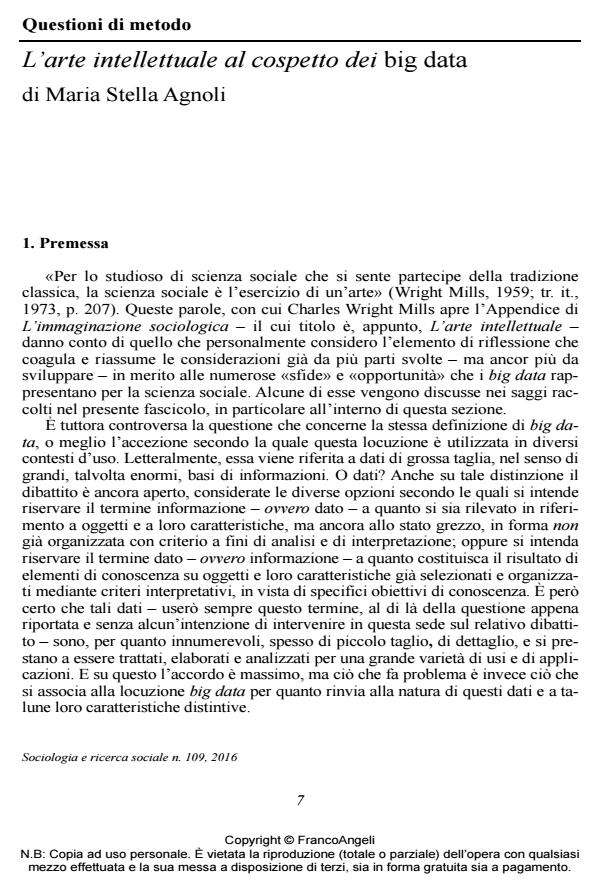Intellectual Craftsmanship and Big Data
Journal title SOCIOLOGIA E RICERCA SOCIALE
Author/s Maria Stella Agnoli
Publishing Year 2016 Issue 2016/109
Language Italian Pages 11 P. 7-17 File size 55 KB
DOI 10.3280/SR2016-109002
DOI is like a bar code for intellectual property: to have more infomation
click here
Below, you can see the article first page
If you want to buy this article in PDF format, you can do it, following the instructions to buy download credits

FrancoAngeli is member of Publishers International Linking Association, Inc (PILA), a not-for-profit association which run the CrossRef service enabling links to and from online scholarly content.
The article introduces theoretical and methodological issues at the center of the debate surrounding Big Data, which are then discussed and examined in the essays that follow. In considering these, the author refers to the maxims and recommendations that Charles Wright Mills, in the appendix to The Sociological Imagination, addresses to a young scholar at the beginning of his/her studies in the field of social science. The article highlights their enduring relevance in the context of the challenges and opportunities presented to social research by the growing, and presumed, availability, of information stored and organized in large digitized data banks.
- Handbook of Research on Advanced Research Methodologies for a Digital Society Costantino Cipolla, pp.42 (ISBN:9781799884736)
- What People Leave Behind Barbara Sonzogni, pp.293 (ISBN:978-3-031-11755-8)
Maria Stella Agnoli, L’arte intellettuale al cospetto dei big data in "SOCIOLOGIA E RICERCA SOCIALE " 109/2016, pp 7-17, DOI: 10.3280/SR2016-109002